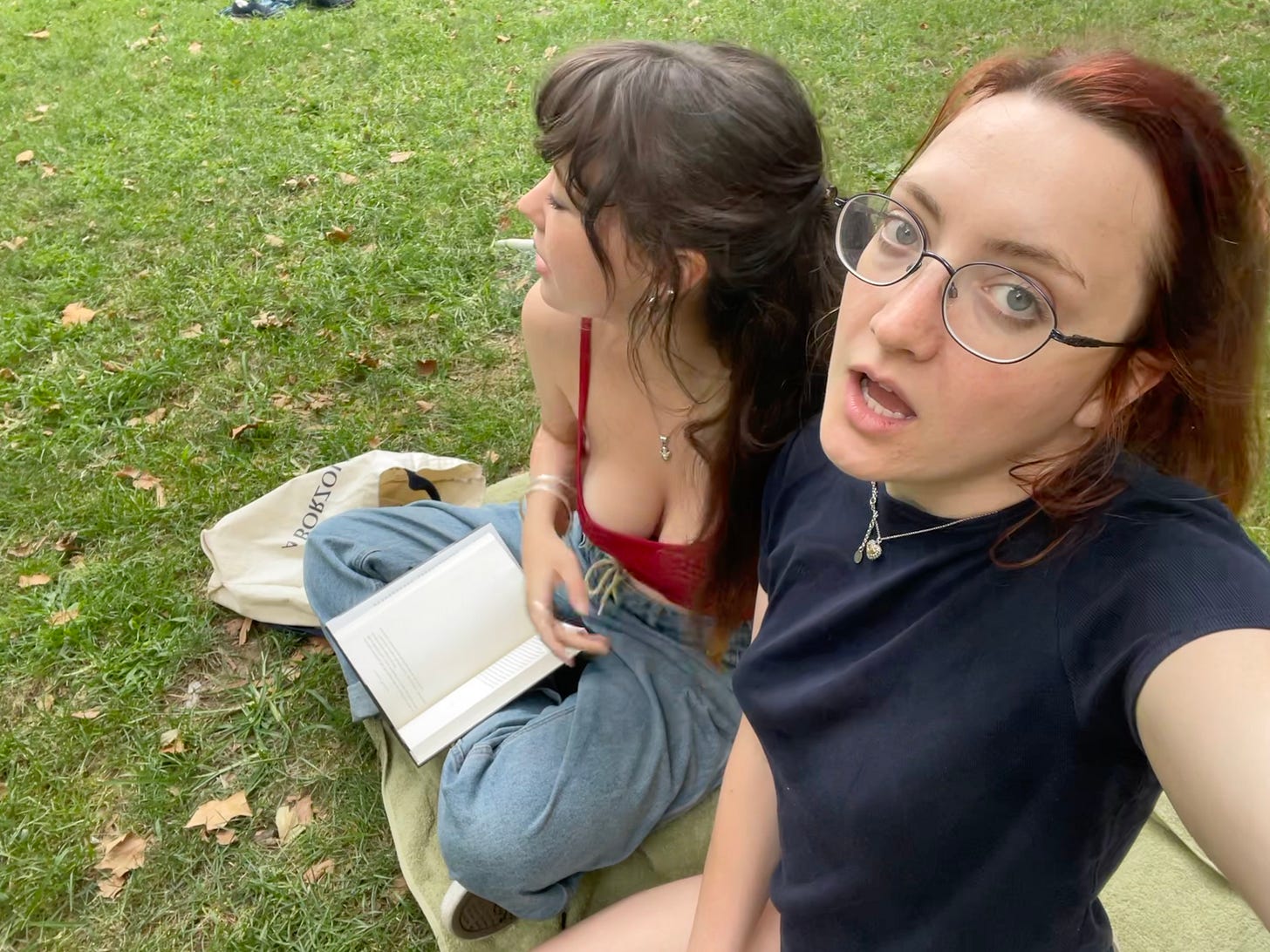How i read
another long masterpost about reading (and writing) (and working)
this is the third and final (for now) installment of my reading series for paid subscribers. part one, Poser ethics, was an essay about aesthetics, reading culture, and the fine line between “performance” and “authenticity”. part two, What I read, was an extensive series of reading recommendations. This one is basically about how I developed and continue to maintain a life built around reading and writing as a person with a terrible work ethic and a phone addiction. randomly it is 5000 words long which is also why it’s late.
Someone told me once that the most deeply-felt benefit of learning about a topic like urban architecture or local plant life is that it tangibly improves and enriches the experience of walking around. Once you start learning about that stuff, the density of accessible information per city block increases in an extremely literal sense: you are able to engage with more of the world than you were before, even though the amount of physical world around you has not changed.
I see this phenomenon all the time in my best friend, a scientifically-minded genius who grew up on the New England coastline and worked for much of our friendship at a prestigious biodiversity museum. (I, contrastingly, have spent my whole adult life moving between increasingly urbanized city centers and complaining hyperbolically about the one time my boyfriend made me go camping even though it wasn’t actually that bad.) When I go on a walk with her at the beach near her home in Rhode Island, I’ve realized that we’re essentially engaging with two completely separate realities. I look at the landscape around us and have no choice but to think about what I see in these sort of dumb, caveman-ish terms: that is the ocean, that is sand, that is a fish, so on. I literally don’t have access to anything more — and because I don’t have language for what I’m looking at, it feels like I literally see less, like my resolution on the world is lower. But Sadie looks at the same half-kilometer of coastline and sees it all. She not only has access to a far more differentiated world (she recognizes like a hundred species of fish, and all the native birds individually, and can identify various water and weather conditions on sight), but also to these huge network of historicized stories about everything she sees. A fish isn’t just a fish but a thought about the changing climate conditions in the region, or an explanation of why brackish water supports specific types of biodiversity, or an anecdote about how that fish interacts with the other wildlife in its ecosystem. For every one of my big, broad pixels, Sadie sees a thousand. She has made the world around her physically more interesting and more alive through the act of learning about it.
It goes nearly without saying that this is what reading does to the world around us (obviously, one of the best ways to learn about architecture or ecology is to read). But, more relevant to the issue at hand, it’s also what reading does to other books. One of the great pleasures of getting myself “into reading” over the last few years is the realization that the difficulty of any given book is not a fixed quantity — that I can make books more interesting, more compelling, and more accessible through the simple act of reading more of them. The whole literary enterprise becomes exponentially more exciting the more I invest in it, like a perfect little perpetual motion machine. It’s a kind of miracle to watch this happen in yourself, to foster the process of enchantment through sustained, long-term work — revisiting books that you once thought were boring and impenetrable and finding them suddenly lush and dense, like returning to a desert and realizing that it had been replaced by a rainforest while you were away.
Okay, so this is pretty much tautological. The best way to read more is to read more. NOT VERY HELPFUL! On a material level, then: here are some things I did to get my brain back after years of being basically completely unable to finish a book.
behind the paywall: a list of the eighteen-ish books i’ve read over the past eight-ish weeks; how i broke my Big Slump (i.e. got into reading as a part of my adult life) and also how i break my little slumps and integrate reading into the fabric of my life on a daily basis; many book recs for various situations; my reading process + annotation pics; some thoughts on building a life around reading and writing In These Times, and what i think i might do if i was starting my “path” all over again now. plus some thoughts on “the scene”. this post is once again too long for email so you may have to read it in on your browser. xx
HOW I GOT INTO READING



